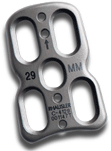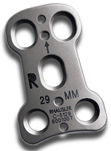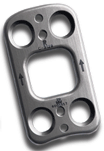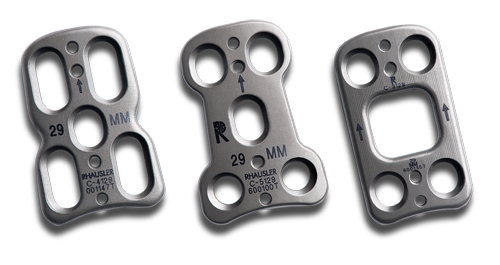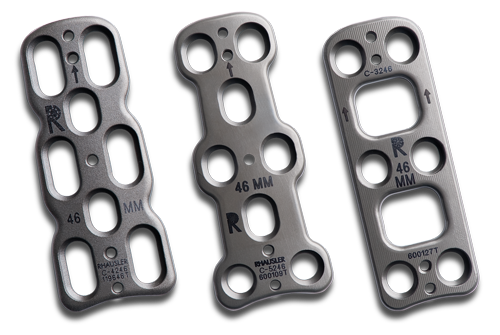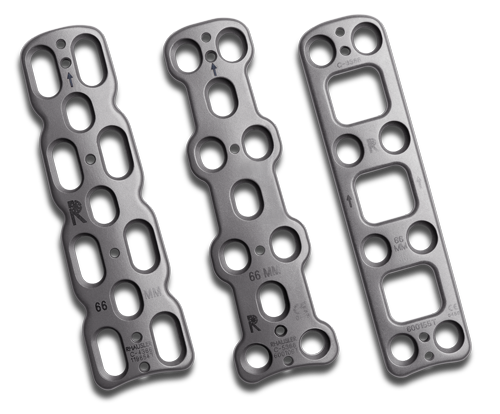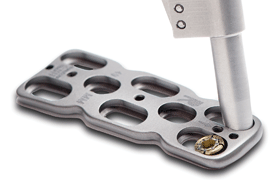The Rhausler Anterior Cervical Vertebrae Plate System
The Rhausler Cervical Plate System offers three cervical plate options:
- Dynamic (fig.1)
- Semiconstrained (fig. 2)
- QuickPlate™ (fig. 3)
All cervical plates are low-profile medical grade titanium alloy and available in one-, two-, and three-level designs in a range of sizes. All Rhausler plates use Rhausler self-locking bone screws, providing operative flexibility for the surgeon to modify the type of cervical plate used depending on intraoperative pathology and bone quality.
The Bone Screw is retained inside the plate’s screw holes with one simple 1/16 turn of
the CAM-Lock mechanism. The CAM-Lock keeps the shoulders of the screw retained, but free to translate and rotate, in the recess in the undercut shoulders of the screw hole in the plate.
The Bone Screw has both linear dynamic and axial rotational movement in the Dynamic Plate, and axial rotational movement in the Semiconstrained and QuickPlate. These dynamic motions allow the intra-discal bone graft to be mechanically loaded, according to Wolff’s Law.
CERVICAL PLATE OPTIONS
Dynamic Plate
- 16mm wide at the top and 19mm at the bottom, with stackable convex and concave ends for re-operations or multilevel plating
- Fully dynamic in design, allowing complete load sharing to the intra-discal graft
- Each level can settle up to 3.0mm, for a desirable healing arthrodesis environment
- Bone graft screw holes allow the surgeon to attach the plate to the cage or graft
Semiconstrained Plate
- 16mm wide at the top and 19mm at the bottom with stackable convex and concave ends for reoperations or multilevel plating
- Semidynamic in design to allow settling of each level up to 1.5mm
- Bone graft screw holes, allowing the surgeon to attach the cage or graft to the plate in single level cases
The QuickPlate
- Slimmest in design and 16mm wide on the top and bottom
- Screw holes have the same axial rotation function as the Semiconstrained Plate
- Large graft viewing slots for the observation of the cage or graft implant during and after placement of the plate and screws
- Stackable convex and concave ends for reoperations or multilevel plating
QuickPlate, Semiconstrained or Dynamic Cervical Plates are available in these sizes:
- One-Level Plates: lengths 21 to 35mm
- Two-Level Plates: lengths 37 to 55mm
- Three-Level Plates: lengths 54 to 78mm
- Four-Level Plates: lengths 69 to 109mm - Dynamic and Semiconstrained special order only
